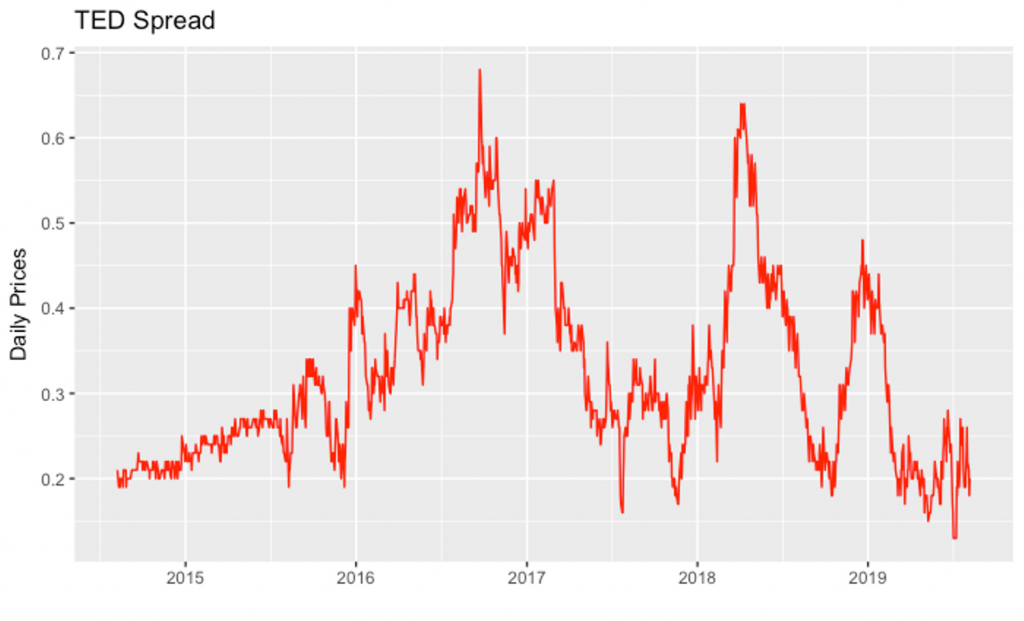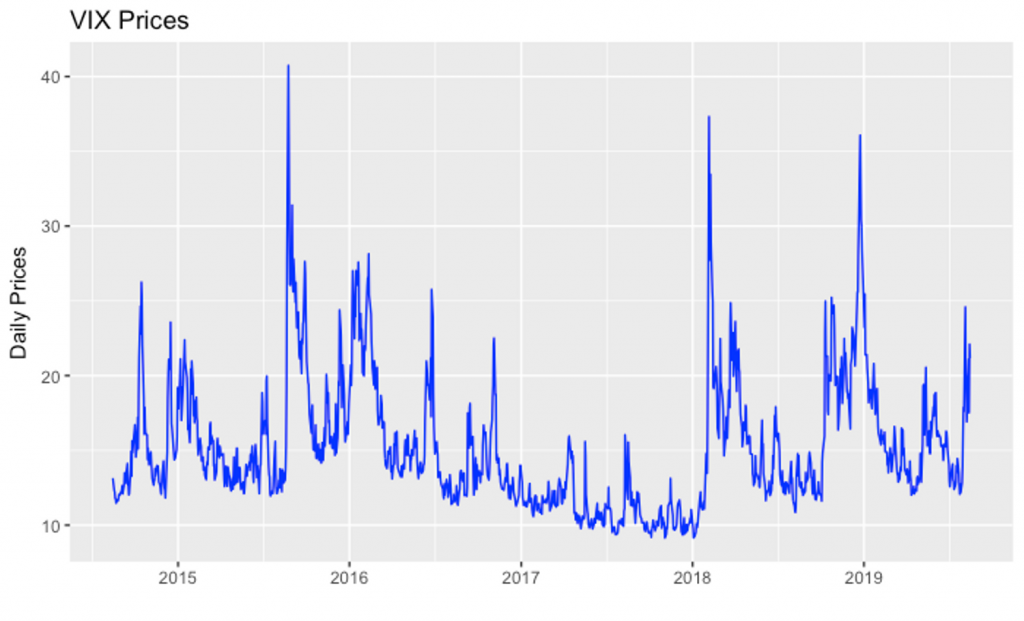Risk Indicators - VIX Index and TED Spread
There are some risks indicators that traders and investors need to watch to avoid days with high volatility. These indicators are referred to as leading risk indicators. A good example of a risk indicator is the VIX index. This index tracks the implied volatility of the stocks that compose the S&P 500 index. If VIX is higher than 35, the likelihood of a big gap in prices on market open and an increase in volatility becomes greater.
Besides VIX, another leading risk indicator is the TED spread. This is the difference between the three-month London Interbank Offered Rate (LIBOR) based in US dollars and the three-month T-bill interest rate.
The graphs for TED spread and VIX Volatility Index are shown below:


In both graphs we see that VIX index and the TED spread have spikes, especially the VIX index (many times is greater than 20). To avoid extreme volatility a conservative approach to preserve capital in the long term should avoid these periods. The above two graphs for VIX index and TED spread were created in R and the data was tablen from FRED Economic data website. In the next article, you can learn about how to create the VIX index and TED spread charts in R.
To conclude, any individual strategy or portfolio investment need to be evaluated taking into account their potential risks and losses. In the long term, profitable strategies are those that can control and manage risk better than others. Using risk metrics such as Drawdowns, Max Drawdown Expectations, Calmar and Sharpe ratios, Stop Loss orders are a set of important tools to manage risks in trading strategies.


